This is a free fortnightly newsletter about the New Zealand Net, which meets daily at 2100 NZT on 7030 kHz.
If you would like to be notified by email when a new edition is published, please contact ZL1NZ.
Browse our Newsletter Archive and List of Net Tips.
Featured key
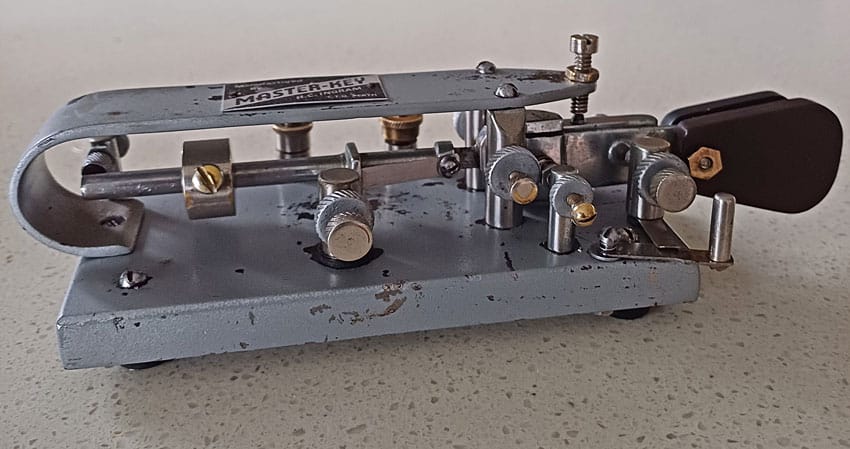
HC Ingram Master Key. Photo: VK2IXV
By Herman VK2IXV
My 1930s Australian-made HC Ingram Master Key is equipped with a fixed dot stabiliser.
A dot stabiliser pre-loads (puts tension on) the vibrating dot contact spring by a very small amount, which almost eliminates contact bounce, which in turn gets rid of scratchy or split dots.
From the 1920s onwards, Australian-made Simplex Auto bugs were equipped with a dot-stabiliser. A dot-stabiliser can also be seen on the 1938 German Novoplex bug, the 1938 McElroy bug and the World War 2 Canadian Airforce Wilson bug.
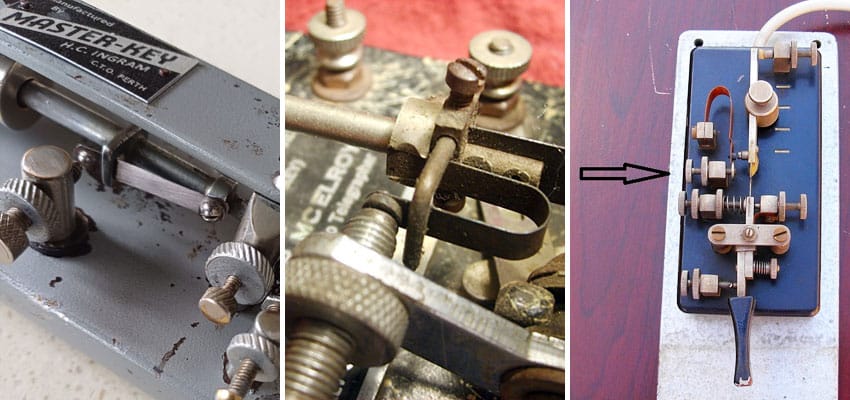
Dot stabilisers on (L-R): Master Key, McElroy, Novoplex
Unfortunately, during the WW2 years and after, most information regarding the advantage of a dot-stabiliser was either lost or discarded.
Should you be worried about scratchy dots, you can make a very basic dot-stabiliser by stuffing a bit of foam in a bug’s U-shaped dot spring.
* If you have an interesting key for this feature, please send a nice clear photo and a few words describing it.
Quick notes
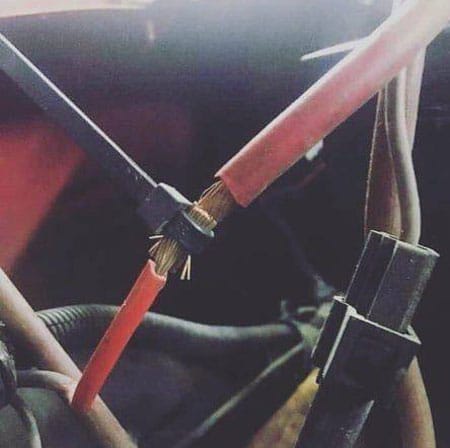 Obviously this use of a cable tie is very unsafe. You should always use at least two of them. 🙂
Obviously this use of a cable tie is very unsafe. You should always use at least two of them. 🙂
Anton ZL1KR and Filip PA9O have been checking into the net recently, which is much appreciated. Filip has been heard particularly well by some of our South Island members.
Thanks to Stephen ZL1ANY for assuming Net Control on 1 January. I was having dinner at a restaurant and the service was so incredibly slow that I didn’t get home in time. I wasn’t worried though, as any net member is welcome to run the net if the designated NCS doesn’t appear.
It’s the start of a new year (HNY by the way) so don’t forget to re-set your radiogram numbers.
The Saturday and Sunday NZ Net sessions are steadily growing and it would be great to see this continue in 2025. Same time, same frequency as the Mon-Fri sessions.
Photo flashback
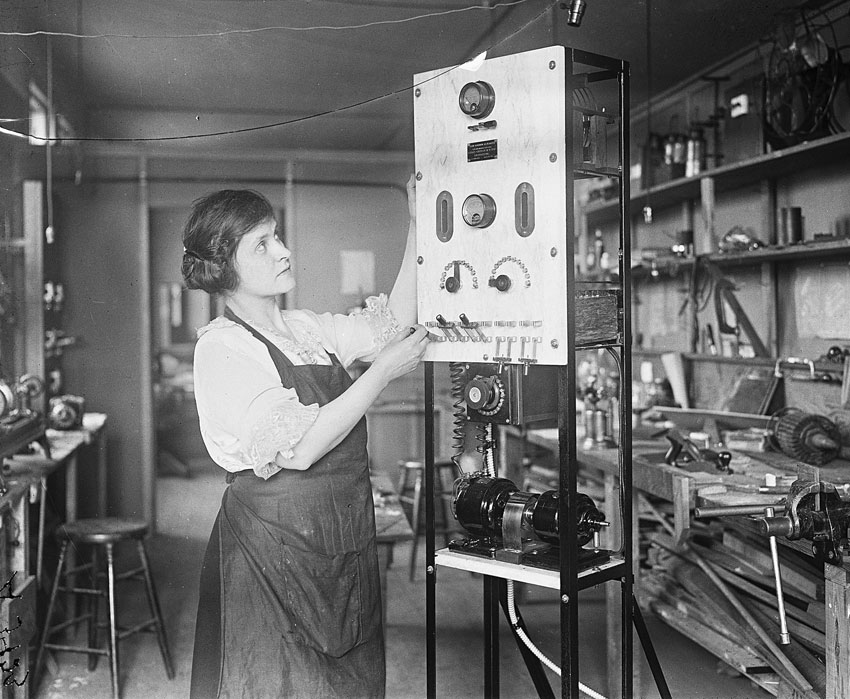
Mary Texanna Loomis (born 1880) was a radio pioneer who founded the Loomis Radio College in Washington DC around 1920. In this photo, Mary is seen at the college c1922.
The Loomis Radio College offered a six-month course leading to a United States first-class commercial radio license, and a four-year course leading to a degree in Radio Engineering.
Mary also intended that her students understand more than just the workings of radio. In addition to a radio laboratory (with equipment constructed almost entirely by Miss Loomis herself), the school maintained a complete shop capable of teaching carpentry, drafting, and basic electricity. She reasoned that many of her graduates might find themselves at sea, or in other challenging situations, and she wanted them adequately prepared.
Net numbers

NZ Net ended 2024 on another high note, with our highest-ever number of December check-ins. We also recorded our highest annual number of check-ins: 2778. Here’s the monthly report:
NR1 R ZL1NZ 49/46 AUCKLAND 0800Z 3JAN25 = NZ NET = DEC QNI PA9O 11 VK3DRQ 22 VK4PN 17 ZL1AJY 1 ZL1ANY 16 ZL1AYN 3 ZL1BDS 15 ZL1KR 6 ZL1NZ 15 ZL1PX 18 ZL2GD 15 ZL2KE 9 ZL2LN 1 ZL2TE 16 ZL3TK 11 ZL4BDG 7 ZL4FZ 3 ZL4GW 7 ZL4KX 16 ZL4LDY 11 TOTAL 220 QTC 27 = ZL1NZ
ZL2KE plans another Cook Islands DXpedition
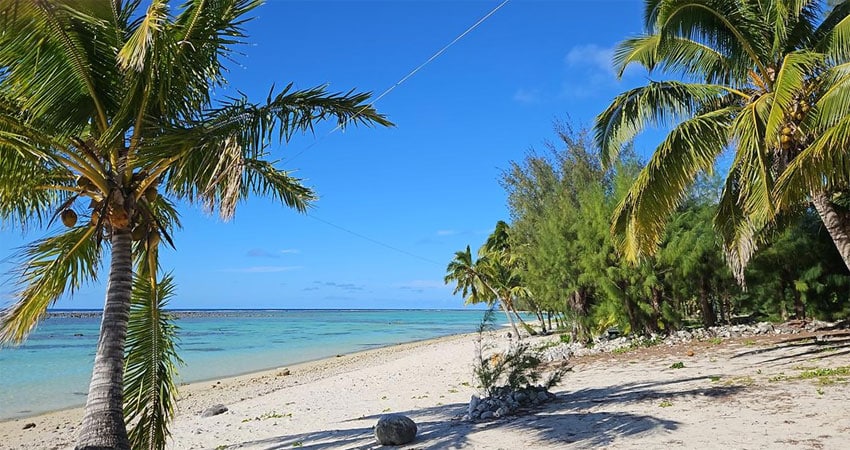
Rarotonga: End-fed from house (our of picture at top right) to palm tree and then parallel to beach (just visible)
By Steve ZL2KE
Five months operating as E51KEE on Rarotonga island and Aitutaki atoll in the South Cook Islands was truly a memorable experience. This was a ‘Holiday DXpedition’ with HF operation interspersed with tropical activities and consideration for my XYL. Nevertheless many logbook pages were completed over two weeks.
Several months prior to departure I had a 20m contact with Jim, a long-time ham radio resident of Rarotonga, who told me that it had been many years since anyone operated CW from E51. As CW has been my preferred mode for over 60 years, it was an easy decision for CW to be my focus, with only a bit of SSB activity.
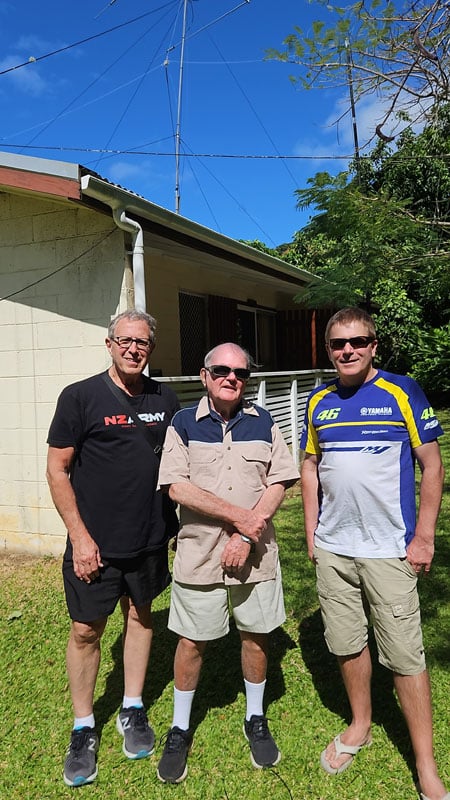
L-R: Steve E51KEE, Jim E51JD, Steve E51CZZ , at Jim’s QTH
- My friend from Wellington (and his XYL) joined us at our beach house and he operated as E51CZZ only on SSB.
- I soon learned that my XYL preferred CW with headphones, as it was a silent activity, allowing her to enjoy hearing only the peaceful lagoon waves, especially early in the morning and late at night.
Although ZL is not a rare contact for serious DX hunters I have had quite a few pile ups as ZL2KE, but the huge pile ups from E51 were on another level, usually requiring me to send ‘UP’ so that callers were spread out.
I operated all bands 40 to 10. The local noise level was surprisingly low, only an S2 for 40m. I did try 80m but it was disappointingly dead.
There were several smart DX hunters who followed me on the Reverse Beacon Network and DX Clusters, so when I changed bands they were the first to contact me. All in all the CW ops who contacted me were considerate and followed the DX Code of Conduct, however there were a few annoying ops that did not respect the rules. For one bad European op I had to slowly, repeatedly send his callsign plus QRT and he finally got the message, allowing me to carry on with the pile up.
There were many excellent ops, including some who took the time to email us personally with thank-you notes. I have always felt that the best hams are those who prefer CW, although I know that I am biased!
We used quarter-wave and 4:1 multi band verticals next to the salt water, a 10m two-element yagi, a 9:1 end-fed wire from the beach house down to the lagoon, and a mini G5RV. All antennas worked very well thanks to the ‘salt water amp’ which adds 10 dB gain (according to K4OGO’s YouTube channel).
17m was particularly good for me. I did try to use 30, 17 and 12m as much as possible since DX hunters would appreciate CW on the WARC bands. There were times when the Reverse Beacon showed that I was putting strong signals into ZL and VK but with few or no replies, probably due to the time of day when ops were not on the air. Neil ZL1NZ was the only NZ Net member who contacted me. I did try to check in to the VKCW Net (20m) and NZ Net (80m) but propagation was not good.
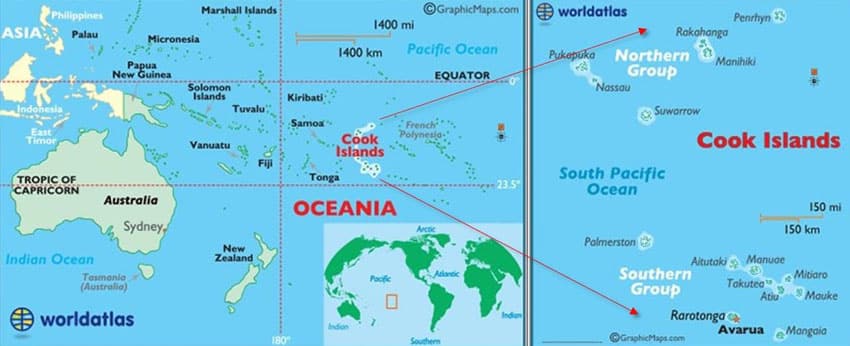
We had several inspections at airport security checks. The first was at Auckland Airport where the friendly security officers were genuinely interested in my heavy UR5DX paddle that I carried in a shoulder bag. Then again when leaving Rarotonga for New Zealand. The fact that Morse code was still in use by many thousands of ops around the world fascinated them.
E51CZZ had a less-pleasant interaction when leaving from Rarotonga Airport; his XYL’s name was called out on the public sound system ordering her to go to the security office (she had the check-in luggage with some of his gear). He explained that it was his two power supplies for his 200-watt rig, showing them his Cook Islands Amateur Radio License, but evidently they were not impressed and not convinced at first.
At my fastest pace I logged two QSOs per minute, using paper log pages which I then photographed and emailed to Antonello, our QSL Manager in Italy. We had not used a QSl manager before, and found that it made our mini DXpedition so much easier. He arranged for us to have beautiful 2-sided colour QSL cards designed and printed by LZ3HI in Bulgaria. It did not cost us anything and it was a reasonable cost for those that wanted QSL cards sent by snail mail.
Eight months from now I will again be operating from Rarotonga with my IC-7300. Steve E51CZZ says that he plans to join me in 2026 so hopefully that will happen as well. If you would like to have a great tropical holiday in the Cook Islands including ham radio, and would like information feel free to contact me. One point to keep in mind is that it would be difficult or impossible to use ham radio at a resort so a separate house or bungalow is the way to go unless you have portable gear to use at a beach or park.
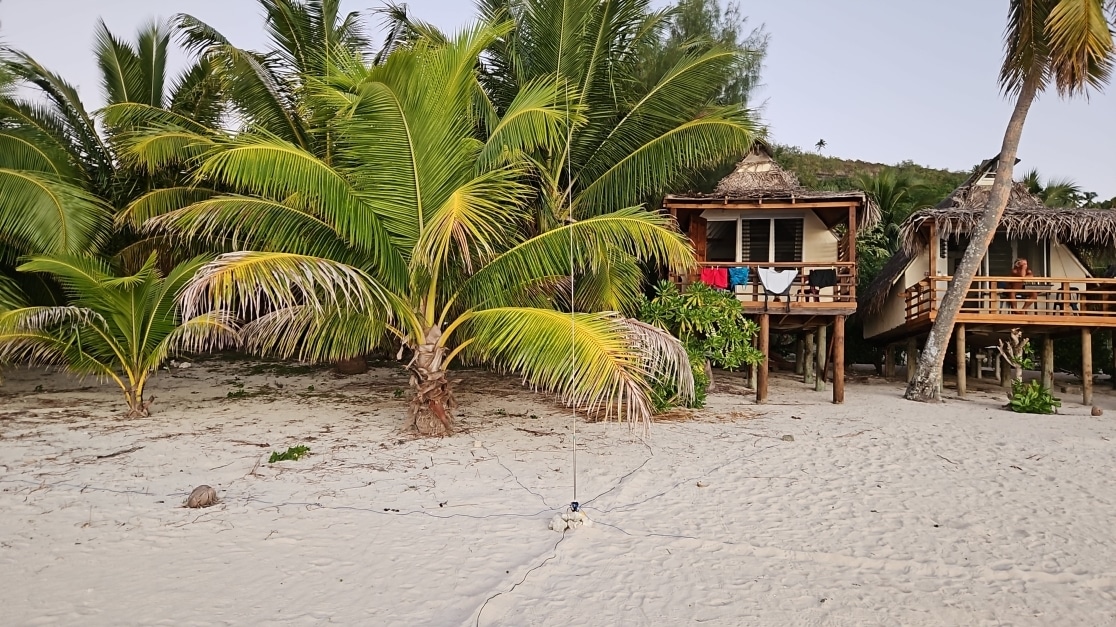
Aitutaki: vertical with radial into salt water lagoon
Video: Make a single-lever paddle from an old hard drive
Net tip: Priority check-in
 Even if you don’t fly first class, you can still qualify for priority check-in on NZ Net!
Even if you don’t fly first class, you can still qualify for priority check-in on NZ Net!
Your net control stations like to keep the net running briskly and one way we do this is by sending stations off-frequency to clear traffic. We only do this during the first five minutes of the net, however. Otherwise, there’s too much risk that the stations will not be back on net frequency by the time we’re ready for any QNCs and the net closing.
You can help make the net run efficiently by following these guidelines.
During the first five minutes of the net, check in only if one or more of the following applies:
– you have traffic to send,
– you hear someone else list traffic for you,
– you do not hear any other stations trying to check in.
After 2105 hours, all stations are welcome to check in.
The net always accepts traffic, so if you can’t get in before 2105, please list your traffic whenever you check in.
(First published in NZ Net News 83)
Advertising archive
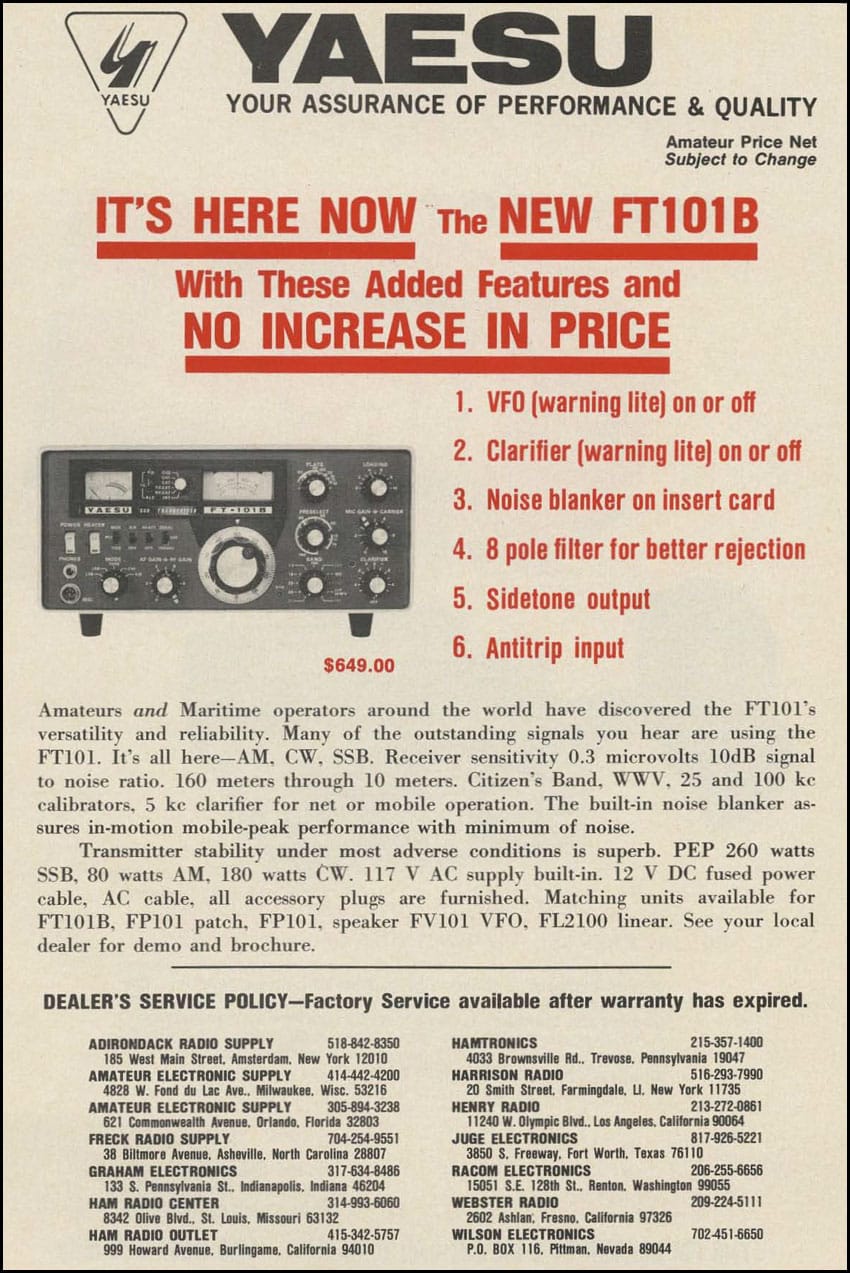
73 magazine, Dec 1973
Suggestions?
If you have suggestions on how to make the NZ Net better, or things you’d like to see covered in these updates, please contact ZL1NZ. You might even like to write something for the newsletter.
Thanks for reading, and I hope to hear you soon on the NZ Net!
—
Neil Sanderson ZL1NZ, Net Manager
New Zealand Net (NZ NET)
7030 kHz at 9pm NZT Daily


